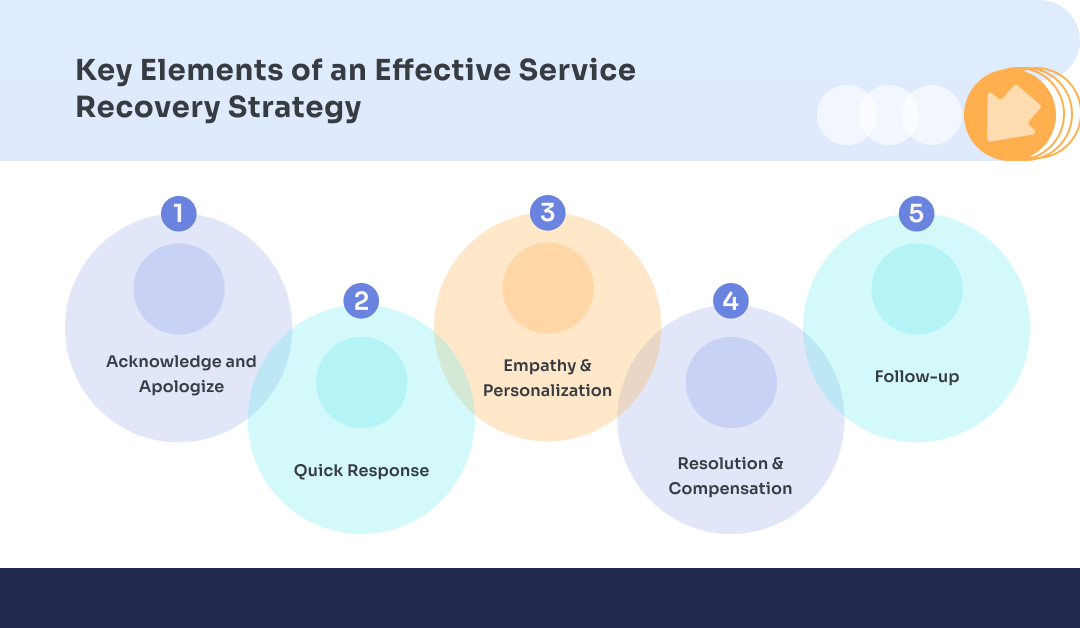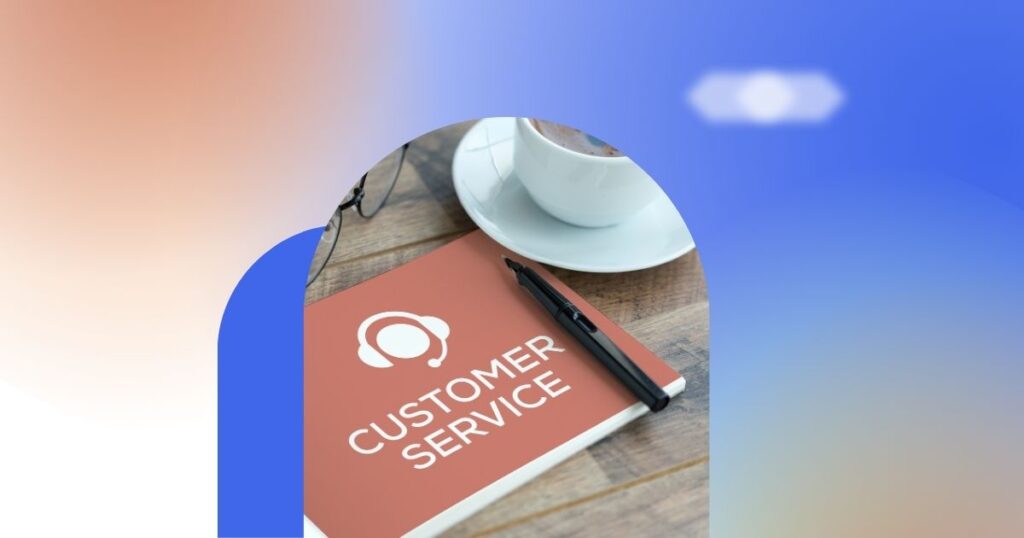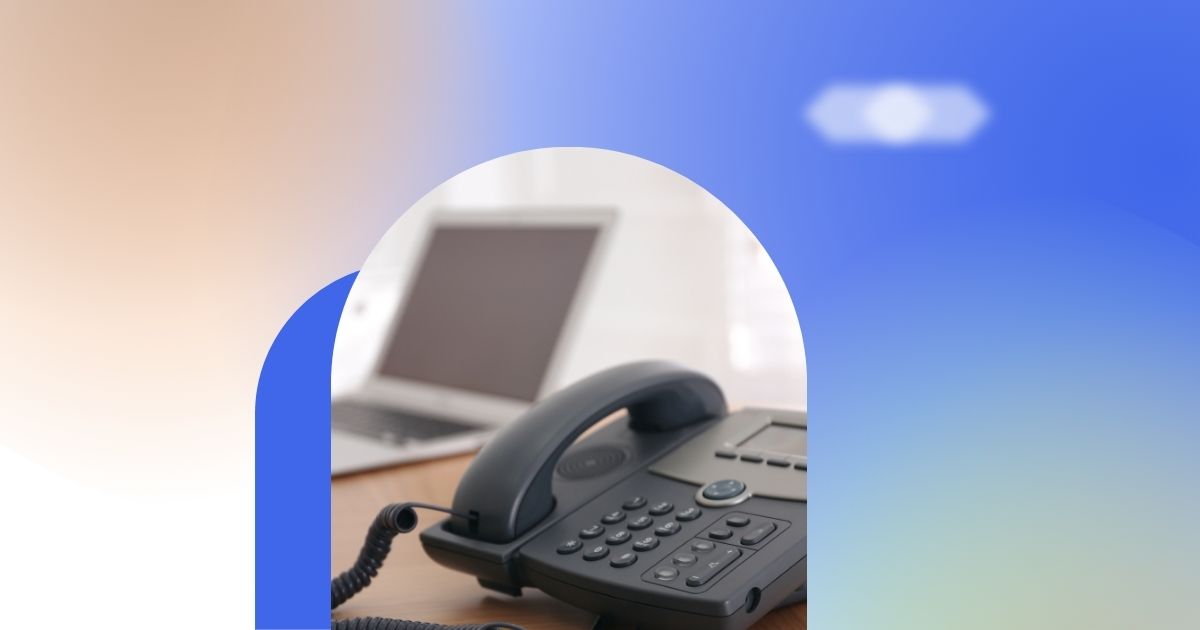Are you struggling to maintain or regain customer trust after a negative experience? Do you want a proven way to resolve these issues effectively? Customer service recovery is one of the most powerful tools for turning a negative customer experience into a positive outcome.
Whether it’s a delayed order, poor support, or a product issue, your response can make all the difference. When customer recovery is handled professionally, it can not only resolve the problem but also strengthen the relationship between your business and your customers.
An effective recovery strategy goes beyond fixing mistakes—it helps prevent churn and enhances your brand’s reputation. By acknowledging missteps, providing timely solutions, and delivering personalized responses, you can turn a frustrated customer into a loyal advocate.
Interested in leveraging customer service recovery to strengthen your business? Keep reading to explore key recovery strategies, the customer service recovery process, and how providers like ScaleSupport can help you master customer recovery solutions.
Understanding Service Failures and Their Impact
What is a Service Failure?
A service failure occurs when a business fails to meet customer expectations, leading to dissatisfaction and potential service termination. These failures can be:
- Minor inconveniences – Delayed responses, unclear communication.
- Product-related issues – Defective products, unmet promises.
- Operational mishaps – Billing errors, shipping delays.
- Poor customer support – Rude interactions, unhelpful responses.
Regardless of severity, a service failure can leave customers frustrated and unheard—driving them straight to a competitor.
The Ripple Effect of Poor Service
The damage doesn’t stop with just one unhappy customer. Studies show:
- 60% of consumers stop doing business with brands after a poor experience.
- Dissatisfied customers often share their experiences online, influencing others.
- Negative reviews damage reputation, reduce customer trust, and hinder new customer acquisition.
Why Speed & Quality of Recovery Matter
A fast and effective response can turn frustration into loyalty.
- Customers expect a response within an hour and a resolution within 24 hours.
- Businesses that resolve issues promptly can convert 93% of dissatisfied customers into loyal ones.
Turning Failures into Loyalty
Service failures are inevitable, but businesses that prioritize quick, effective recovery can transform negative experiences into opportunities. A proactive approach to customer service recovery doesn’t just fix problems—it builds trust, retains customers, and strengthens brand reputation.
Key Elements of an Effective Service Recovery Strategy

Acknowledge & Apologize
One of the most effective customer service recovery examples starts with a sincere apology because your customers want to feel heard and valued, which is why acknowledging the issue at hand without being defensive is crucial.
Moreover, a simple and genuine apology can help you remove any frustration between your business and your customer and open doors for a smooth resolution.
Quick Response
As mentioned, the speed of your customer service recovery also matters. The longer your customer has to wait, the more frustrated they become, as most of them expect a response almost immediately after their complaint.
Having a fast and proactive approach can help businesses reassure their customers that their concerns are a top priority and can help prevent any negative reviews while also increasing the chance of maintaining a healthy customer relationship.
Empathy & Personalization
Almost no customers want a robotic or one-size-fits-all response. What they are looking for is a response that can understand them. When it comes to effective communication, empathy is key, which can easily turn a negative and heated discussion into a positive and relaxed one.
For instance, you can start by addressing your customer with their name, understand their specific issue, and then offer a tailored solution to help build trust.
This approach can also aid in creating a stronger relationship and longer-term loyalty between your business and customer.
Resolution & Compensation
Effectively solving the problem is also just as important as acknowledging it. Regardless of whether it is a refund, discount, replacement, service upgrade, etc., providing a fair solution to your customers can show them that their business is valued.
Also, the best customer service recovery model aligns with the issues’ importance while ensuring that the company stays financially stable.
Follow-up
After a service failure is handled professionally and resolved, you will have to do a follow-up since it allows for long-term satisfaction with your customer.
The best way to approach this is by using an email or making a call and asking if the customer is happy with the final outcome.
How to Train Your Support Team for Better Customer Service Recovery
Scripts & Guidelines
The first step is to provide your team with a clear script and a guideline that ensures they can handle complaints professionally and consistently. Moreover, these materials can allow your agents to move through difficult conversations by using the right tone and staying focused on providing the solution.
One more thing to remember is that while your script should provide a structure, it should be flexible enough to allow your team to personalize it.
Role-Playing Exercises
Providing scenario-based training can also help your support team experience real-world service failures — by going through common and complex issues through roleplaying your agents can build confidence and allow them to build quick decision-making skills.
In fact, this approach will also help them anticipate your customer’s emotions so that they can cater their response for an effective customer service recovery.
Feedback & Improvement
Another effective way to improve your customer service recovery is by implementing feedback loops, which allow businesses to refine their approach further. Collect information by encouraging your agents to share customers’ insights and feedback beyond their interaction to help you understand the common patterns in your service failures.
Moreover, having regular feedback sessions can also increase your team’s problem-solving skills and allow you to ensure that your recovery strategies continue to change and meet the changing demands of your customers.
Support from Experts
Handling service failure isn’t an easy job, it requires expertise, consistency alongside availability. This is why using the services of experts like ScaleSupport can provide your agents with 24/7 service recovery that is tailored to your business needs.
Plus, their expert approach also ensures quick responses, empathetic communication, and effective solutions. This approach can help businesses to maintain their customers and build long-term trust among them.
Leveraging Technology for Customer Service Recovery
1. CRM for Tracking
A Customer Relationship Management (CRM) system helps businesses:
- Track customer complaints and monitor resolutions.
- Identify patterns in service failures for proactive improvements.
- Ensure no issues go unnoticed, leading to faster resolutions.
- Enhance efficiency, especially for remote customer support teams managing high volumes.
2. Automation with a Human Touch
Automation speeds up customer service recovery but must feel personal. A balanced approach includes:
- AI-powered chatbots & automated emails – Handle common service failures quickly and reduce wait times.
- Blending automation with human support – Ensures complex issues receive personalized solutions, preventing frustration.
3. Sentiment Analysis Tools
AI-powered sentiment tools enhance customer interactions by:
- Analyzing tone and word choice to detect frustration or dissatisfaction.
- Helping agents respond appropriately with tailored solutions.
- Preventing escalations and improving agent experience.
4. Tech-Driven Solutions
Service providers like ScaleSupport offer:
- AI solutions for monitoring customer issues.
- Automated ticketing and CRM integration.
- Expert support teams for seamless recovery solutions.
By integrating these technologies, businesses can enhance customer recovery efforts, improve resolution speed, and boost overall satisfaction.
Measuring the Success of Your Customer Service Recovery Efforts
Tracking Key Metrics
If you want to make sure that you have an effective customer service revolver, you will need to keep track of a few matrices like customer satisfaction scores, NET promoter, Retention rates, online reviews, etc. These can help businesses figure out how effectively they’ve resolved service failures and managed to retain customers.
Improvement in these matrices shows a strong customer service recovery process, whereas a decline in them will highlight the areas that need your attention.
Reputation Management
Tools that allow you to manage customer feedback surveys and online reputation can also provide insight into the effectiveness of your performance. Moreover, these surveys allow businesses to collect their customer’s statements after an issue is resolved, while monitoring online reviews can help them identify recurring problems in their services.
Plus, actively resolving this negative feedback can improve the brand’s perspective and continue to improve its customer recovery solutions.
Improvement Strategies
Your service recovery model should evolve based on the information and feedback you collect from your customers. Using regular training, process refinements, and tools that can provide detailed insights can ensure that your business always meets your customer’s expectations.
Not to mention, companies that are committed to continuously improving their customer service recovery can not only reduce service failure but can also create lasting loyalty among their customers.
Gain Customer Loyalty With Customer Service Recovery
Turning Setbacks into Opportunities
Service failures are inevitable, but how a business responds makes all the difference. A well-executed customer service recovery strategy can turn a negative experience into a moment of trust-building, reinforcing customer loyalty.
By acknowledging mistakes, responding quickly, and providing effective solutions, businesses can:
- Restore customer confidence.
- Prevent long-term dissatisfaction.
- Strengthen relationships by demonstrating a commitment to customer satisfaction.
Beyond Fixing Problems: Building Stronger Connections
Service recovery isn’t just about solving issues—it’s about deepening the relationship between your brand and customers. When handled well, customer service recovery can:
- Show customers that their concerns truly matter.
- Make them feel valued and heard, leading to long-term trust.
- Convert one-time buyers into loyal brand advocates.
The Lasting Impact of Exceptional Recovery
Customers remember how they were treated during difficult moments—often more than the mistake itself. A proactive, empathetic approach can transform a frustrated customer into a devoted one.
By making customer service recovery a core part of your customer experience strategy, businesses don’t just fix problems—they cultivate lasting loyalty and set themselves apart from competitors.
Enhance Your Service Recovery Strategy with Expert Support
To make your service recovery efforts more efficient, partnering with experts can make all the difference. ScaleSupport’s services provide businesses with expert and customer-driven solutions designed to help you retain customers and increase your brand’s reputation.
Ready to elevate your approach? Schedule a free consultation today and discover how ScaleSupport can help you rebuild trust and win back your customers.

Dianne has extensive experience as a Content Writer, she creates engaging content that captivates readers and ranks well online. She stays on top of industry trends to keep her work fresh and impactful. She has a talent for turning complex ideas into relatable stories. When she’s not writing, you’ll probably find her with a crochet hook in hand or working on a fun craft project. She loves bringing creativity to life, whether it’s through words or handmade creations.






